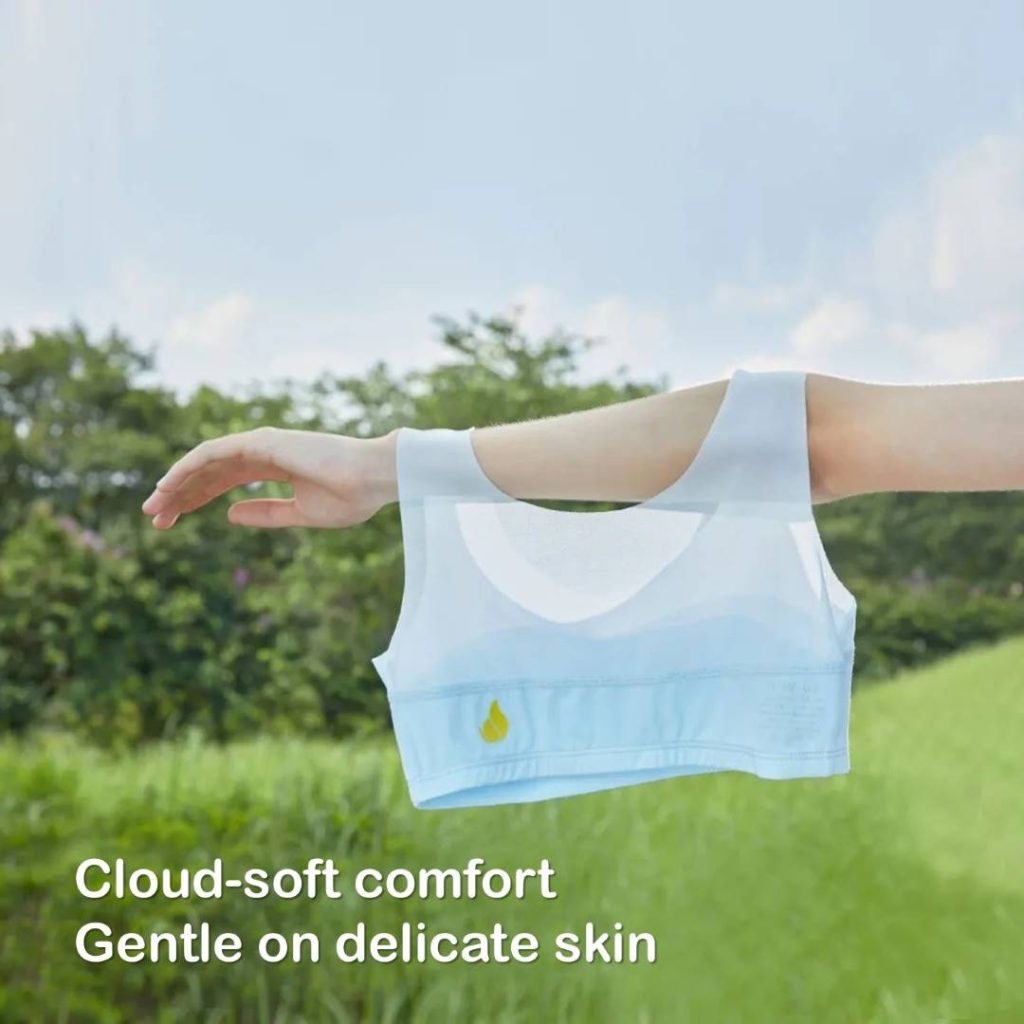Ever feel like every morning is a battle just to get your daughter to wear clothing? If your child refuses to wear a bra, socks, or pants because of sensory issues, you’re not alone. For children and teens with sensory processing disorder (SPD), autism, ADHD, or tactile sensitivities, the right sensory friendly bra can make all the difference in their day.
Why Sensory Friendly Clothing Matters for Kids with Sensory Processing Issues
A 2021 study in Frontiers in Integrative Neuroscience confirms that up to 16% of school-age kids show sensory processing difficulties— even when they don’t meet criteria for autism or ADHD.
Kids with sensory processing issues often struggle with clothing sensitivities. A seam in the wrong place, a scratchy tag, or a waistband that’s too tight or too loose can irritate sensitive skin and cause discomfort all day long. Pediatric occupational therapists see these clothing issues often and recommend sensory-friendly clothing options to help kids with sensory needs feel comfortable and confident.
What Makes a Sensory Friendly Bra the Best Bet?
When you’re shopping for a bra for kids with sensory issues, it’s important to look for features that address their unique sensory needs. Here’s what parents, occupational therapists, and sensitive kids say makes the difference:
Before you pick a bra, remember: every child’s sensory systems and style preference are unique. The best bet is to find clothing that works for your child’s specific needs.

- Buttery soft, stretchy fabrics: Modal, cotton, or spandex blends are gentle on sensitive skin and won’t cause discomfort. These fabrics allow bras to be stretchy, never constricting or tight-fitting.
- Seamless, tagless design: Seamless construction and tag-free labels prevent irritation and help kids with sensory sensitivities forget they’re even wearing a bra.
- No wires, no hard closures: Wireless bras with pullover styles or hidden adjustable snaps are easier for kids who struggle with fine motor skills or tactile defensiveness.
- Elastic, gentle waistband: A flexible, soft waistband gives firm pressure without being too tight or too loose, helping sensitive kids feel secure but not restricted.
- Adjustable straps: Straps that can be customized for length help prevent digging, slipping, or rolling—common complaints for kids with tactile sensitivities.
- Moisture-wicking and breathable: Especially for sports bras, look for materials that keep kids cool and dry during activity, reducing issues with clothes that cause discomfort.
- Inclusive sizing and adjustable waist: The best sensory friendly clothing brands offer a wide range of sizes and hidden adjustable features, so you can find clothing that fits as comfortably as possible.
Why Suyiyi Stands Out for Kids with Sensory Issues
- Suyiyi’s sensory friendly bra is designed for kids who struggle with wearing a bra due to sensory processing disorder, autism, or tactile sensitivities. Here’s what makes Suyiyi different:
- All Suyiyi bras are tagless, with flat seams and buttery soft modal or cotton blends—no rough edges, ever.
- No wires, no hard closures—just soft, elastic bands and hidden adjustable features so nothing constricts or digs in.
- Every fabric batch is lab-tested for sensitive skin, so you never have to worry about certain fabric causing irritation or discomfort.
- Suyiyi offers a wide range of sizes and styles, so whether your child prefers a snug fit or something looser, there’s a sensory-friendly clothing option for everyone.
- Moisture-wicking and breathable design for sports bra options, so active kids with sensory needs stay comfortable all day.

Strategies to Help Kids with Sensory Clothing Sensitivities
If your child refuses to wear socks or pants, or if tight clothing or certain textures cause discomfort, here are some strategies to help, inspired by pediatric occupational therapists and real families:
- Let your child choose clothing items that feel best to them—some kids prefer firm pressure, while others want loose, soft clothes.
- Wash new clothes several times before wearing to soften the fabric and remove any smells that could cause discomfort.
- Try seamless socks and tagless underwear to avoid common triggers.
- Avoid clothing with zippers or rough waist bands that can constrict or irritate.
- For kids who struggle with sensory processing, pressure activities like wearing a snug vest or using weighted blankets can sometimes help regulate their sensory systems.
Quick Table: What to Look For in a Sensory Friendly Bra
| Feature | Why It Matters for SPD/Autism/ADHD | Suyiyi Delivers? |
|---|---|---|
| Buttery soft, stretchy | Prevents irritation, feels gentle | Yes |
| Seamless, tagless | No scratchy seams or tags | Yes |
| Adjustable straps | Custom fit, reduces strap complaints | Yes |
| Gentle elastic waistband | Support without tightness | Yes |
| Sports bra options | For active, sensitive kids | Yes |
| Inclusive sizing | Fits every stage and body type | Yes |
FAQs
What makes a sensory friendly bra different from a regular bra?
A sensory friendly bra uses buttery soft, stretchy fabrics, seamless construction, and tagless labels to prevent discomfort. It’s designed for sensitive skin and to help kids with sensory processing issues wear clothing comfortably.
How do I know if my child needs sensory-friendly clothing?
If your child refuses to wear certain clothing, complains about tight clothing, or shows tactile defensiveness, sensory-friendly clothing is your best bet. Kids with ADHD, autism, or sensory processing disorder are especially likely to benefit.
Are there other sensory friendly clothing options besides bras?
Absolutely! Sensory clothing includes seamless socks, tagless underwear, and soft tees. Many clothing brands make sensory friendly clothing for children and teens, so you can find clothing that fits your child’s sensory needs and style preference.
What if my child feels uncomfortable in every bra?
Try different clothing options—look for certain fabrics like modal or spandex blends, adjustable waist bands, and styles without zippers or rough seams. Sometimes, layering or pressure activities can help kids process sensory input more comfortably.
Can occupational therapists help with clothing sensitivities?
Yes! A pediatric occupational therapist can work with your child to develop strategies to help with sensory diet, clothing sensitivities, and other issues with clothes. They can recommend pressure activities, sensory socks, and other tools to help kids with sensory processing challenges.
Final Thoughts
Finding the best sensory friendly bra for children and teens with sensory sensitivities isn’t just about style—it’s about helping kids feel comfortable, confident, and ready for anything. With the right sensory-friendly clothing, even the child that refuses to wear socks or pants can find clothing that feels just right. Suyiyi’s sensory friendly bra is designed to help kids with sensory needs, so they can focus on being themselves—not on their clothing issues.
The best sensory friendly bra for sensory issues is the one your child forgets she’s even wearing. That’s real comfort, for real kids, every day.
